Skillful Lacrosse String Patterns Optimize Ball Control and SpeedSkillful Lacrosse String Patterns Optimize Ball Control and Speed
Choosing the Right Lacrosse Mesh Improves Passing Accuracy
When selecting lacrosse mesh for your stick’s pocket, you’ll want to consider the mesh’s stiffness and hole size to achieve ideal ball control for accurate passing. Stiffer meshes with smaller holes tend to provide better ball retention, allowing you to cradle and handle the ball with precision. This gives you superior command over the ball as you wind up for a pass, letting you dial in those quick feeds to cutters or perfectly placed outlet passes to spark fast breaks. On the other hand, more flexible mesh with larger holes generates better ball release for quicker shots or passes, at the expense of some ball control. Finding the right balance will come down to your playing style and position. For example, elite offensive midfielders may prefer a more flexible mesh for lightning-quick give-and-go passing, while lockdown defenders need a bit more stiffness in the mesh to maintain possession when checking opponents. No matter what type of mesh you choose, proper stringing is key to optimize the pocket for catching, throwing, and handling. Focus on stringing a balanced pocket that evenly tensions the mesh across the head. This provides just the right amount of give to cradle securely while still allowing the ball to settle into the optimal release point. Avoid extreme pocket styles like deep fishnets that swallow up the ball or wide-open pancake pockets that cause the ball to rattle around. With the ideal mesh and balanced stringing, you can hone passing accuracy through the smallest windows and over long distances. Dialing in your pocket will lead to effortless ball control and more completed connections between teammates.
Proper Lacrosse Stringing Creates Optimal Ball Release
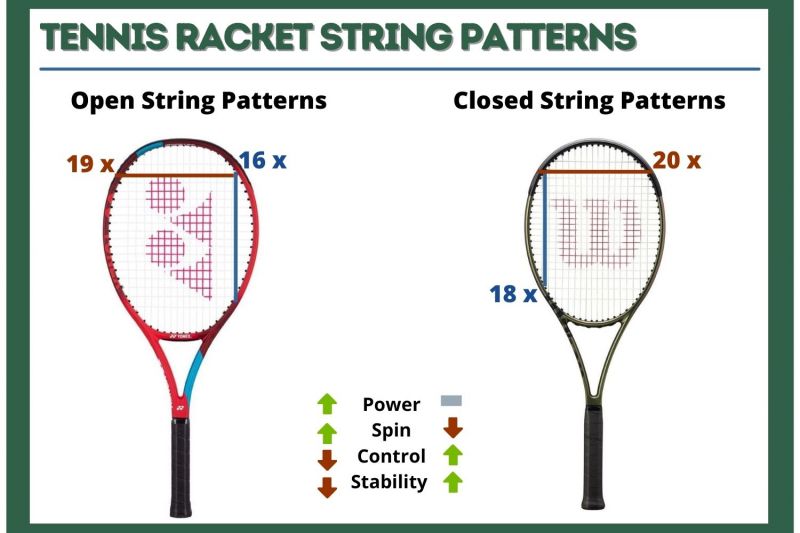
When stringing your lacrosse stick, the top strings are crucial for creating the optimal ball release for powerful and accurate shots. The top strings run horizontally across the top of the head, creating the channel that holds the ball in the pocket. Tightening these strings provides more hold on the ball, while loosening them allows the ball to come out more freely. For most players, the ideal setup is moderately tight top strings that give you control during cradling but still allow the ball to come out smoothly. Extremely tight top strings can restrict ball release too much, causing the ball to get stuck in the pocket, leading to slower passing and shooting. Meanwhile, very loose top strings give you less command over ball retention, as the ball sits too high in the pocket. This can lead to unpredictable release points and inaccurate throws. The key is finding the sweet spot where the ball naturally settles into the lower-mid section of the pocket, right where you want it to come out for a throw or shot. The angle of the top strings also affects release, as a more pinched channel gives the ball less space to come out cleanly. For optimal ball flight, aim for a slightly wider top string angle without compromising ball control. You can experiment with different top string placements and tensions during stringing to see what works best for your playing style. Tighten up a bit if you want more possession for running through checks, or go a bit looser if you’re looking for lightning-quick release. Dialing in the right tension and placement on the top strings will give you the ultimate combo of ball control, smooth release, and pinpoint accuracy when hucking passes up-field or ripping rope on your cannon crank shot. With a properly strung pocket, you’ll have the confidence to fire at will, hit your teammates in stride, and pick corners with precision.
Lacrosse Shooting Strings Boost Shot Velocity
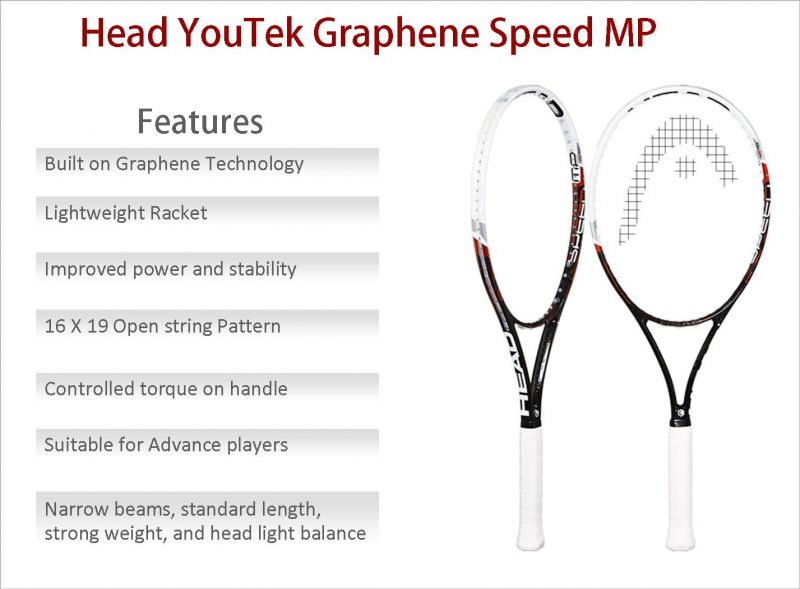
One of the most important stringing elements for generating maximum shot speed in lacrosse is the shooting strings. Shooting strings run horizontally across the throat of the head, below the scoop. These nylon strings act as slingshots that add extra whip to your shot as you bring the stick through the throwing motion. Tighter shooting strings create more tension that really loads up behind the ball as you wind up. This stores more potential energy that gets transferred into the ball when you release, boosting shot velocity. You’ll get the most bang for your buck by using thicker shooting strings rather than traditional shoelaces. The added thickness gives you more surface area for energy transfer. You can also experiment with various shooting string patterns to fine tune your shot power. A triple or quadruple string setup evenly distributes tension across the pocket for consistent missile shots. Some players use a straight pattern for straightforward loading, while interwoven and chevron patterns generate added torque and rotation for extra juice. Avoid cranking down too tightly on the shooting strings, as this can restrict smooth release and cause inaccurate shots. The goal is taut tension without compromising ball control. Combine optimized shooting strings with a flexible mesh and you have a lethal formula for blistering fast shots. The supple mesh works in tandem with the shooting strings by further amplifying energy transmission. When you have both dialed in, you’ll absolutely abuse goalies with smoking hot rockets from up top or in close. Whether you’re looking for a little extra mustard on your sidearm or want to take your overhand crank to the next level, technical shooting string placement is crucial for giving you that coveted extra zip.
Proper Stringing Increases Lacrosse Stick Accuracy
Choosing Mesh Based on Playing Style
Your playing style and position should guide your mesh selection:
- Elite offensive midfielders may prefer more flexible mesh for lightning-quick give-and-go passing
- Lockdown defenders often benefit from stiffer mesh to maintain possession when checking opponents
The Importance of Proper Stringing
Regardless of the mesh type, proper stringing is essential to optimize the pocket for catching, throwing, and handling. Focus on creating a balanced pocket that evenly tensions the mesh across the head. This provides just the right amount of give to cradle securely while allowing the ball to settle into the optimal release point.
Avoid extreme pocket styles such as deep fishnets that swallow up the ball or wide-open pancake pockets that cause the ball to rattle around. With the ideal mesh and balanced stringing, you can hone your passing accuracy through the smallest windows and over long distances.
Optimizing Ball Release Through Top String Technique
The top strings of your lacrosse stick play a crucial role in creating the optimal ball release for powerful and accurate shots. These horizontal strings across the top of the head form the channel that holds the ball in the pocket.

Finding the Right Tension
The tension of the top strings significantly affects ball control and release:
- Tighter strings provide more hold on the ball
- Looser strings allow the ball to come out more freely
For most players, moderately tight top strings offer the ideal balance, providing control during cradling while still allowing smooth ball release.
The Risks of Extreme Tensions
Extremely tight top strings can hinder ball release, causing the ball to get stuck in the pocket and leading to slower passing and shooting. Conversely, very loose top strings offer less command over ball retention, as the ball sits too high in the pocket, potentially resulting in unpredictable release points and inaccurate throws.
Achieving the Sweet Spot
The key is to find the sweet spot where the ball naturally settles into the lower-mid section of the pocket, right where you want it to come out for a throw or shot. The angle of the top strings also affects release; a more pinched channel gives the ball less space to come out cleanly.
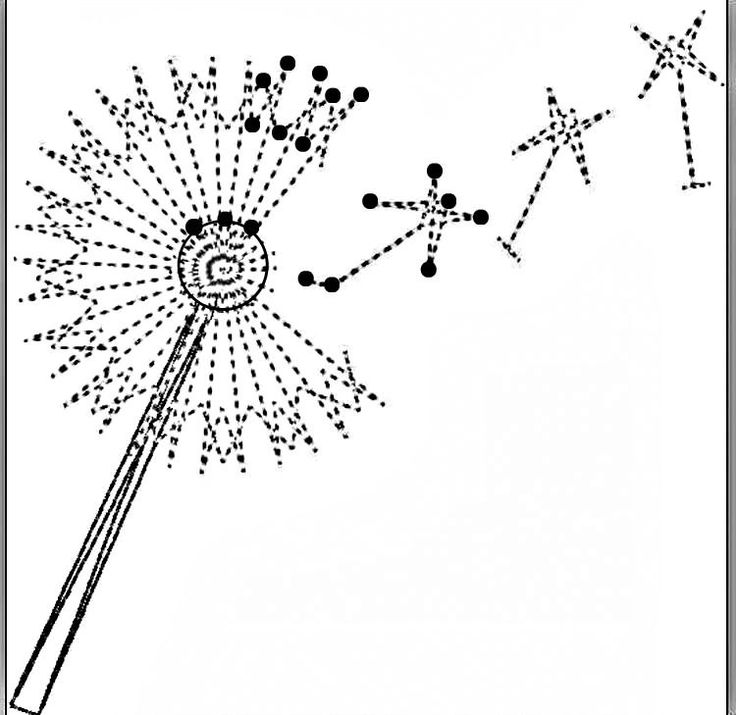
For optimal ball flight, aim for a slightly wider top string angle without compromising ball control. Experiment with different top string placements and tensions during stringing to see what works best for your playing style.
Unleashing Power: The Role of Shooting Strings in Lacrosse
Shooting strings are a critical element in generating maximum shot speed in lacrosse. These nylon strings run horizontally across the throat of the head, below the scoop, and act as slingshots that add extra whip to your shot as you bring the stick through the throwing motion.
The Physics Behind Shooting Strings
Tighter shooting strings create more tension that loads up behind the ball as you wind up. This stores more potential energy that gets transferred into the ball upon release, significantly boosting shot velocity.
Optimizing Shooting String Setup
To maximize the effectiveness of your shooting strings:
- Use thicker shooting strings rather than traditional shoelaces for more surface area and energy transfer
- Experiment with various shooting string patterns to fine-tune your shot power
- Consider a triple or quadruple string setup to evenly distribute tension across the pocket for consistent missile shots
Some players prefer a straight pattern for straightforward loading, while interwoven and chevron patterns can generate added torque and rotation for extra juice.

Finding the Right Tension
While tight shooting strings can increase shot power, it’s crucial not to overdo it. Excessively tight strings can restrict smooth release and cause inconsistencies in your shot. Strike a balance between power and control to achieve optimal performance.
The Art of Pocket Design: Balancing Control and Release
The pocket of your lacrosse stick is where the magic happens. It’s the cradle that holds the ball, the launch pad for your shots, and the key to your passing accuracy. Designing the perfect pocket requires a delicate balance between ball control and smooth release.
Understanding Pocket Depth
Pocket depth plays a crucial role in determining how the ball sits in your stick:
- Deeper pockets offer more ball control and are ideal for dodging and maintaining possession
- Shallower pockets provide quicker release and are better suited for fast-paced passing and shooting
The ideal pocket depth varies depending on your position and playing style. Attackmen might prefer a medium-deep pocket for a balance of control and quick release, while defenders often opt for deeper pockets to maintain possession during checks.

The Channel: Guiding the Ball
The channel is the path the ball travels along as it moves from the pocket to the release point. A well-defined channel helps guide the ball consistently, improving accuracy in both passing and shooting.
To create an effective channel:
- Ensure the sidewall strings are properly tensioned to create a slight U-shape in the pocket
- Use strategically placed shooters to help funnel the ball along the desired path
- Experiment with different pocket shapes (e.g., mid, high, or low) to find what works best for your playing style
Advanced Stringing Techniques for Enhanced Performance
As you delve deeper into the world of lacrosse stringing, you’ll discover advanced techniques that can take your game to the next level. These methods allow for fine-tuning of your stick’s performance to match your specific needs and playing style.
The SI (String Interlock) Technique
The SI technique involves interlocking the sidewall strings with the mesh, creating a more responsive and consistent pocket. Benefits of the SI technique include:

- Improved pocket stability
- Enhanced ball feel and control
- Increased durability of the stringing
To implement the SI technique, you’ll need to carefully weave the sidewall string through both the mesh and the previous knot, creating a tight, interlocked pattern.
Bagged Mesh: Customizing Your Pocket
Bagged mesh is a technique where the mesh is pre-formed into a specific shape before stringing. This allows for greater customization of the pocket’s characteristics. When using bagged mesh:
- Choose a bag shape that complements your playing style (e.g., deeper bag for more hold, shallower for quicker release)
- Ensure the bag is properly aligned in the head during stringing
- Adjust sidewall and shooter string tensions to fine-tune the pocket’s performance
The Art of Knot Placement
Strategic knot placement can significantly impact your stick’s performance. By varying the location and type of knots used in your sidewall stringing, you can create specific pocket characteristics:
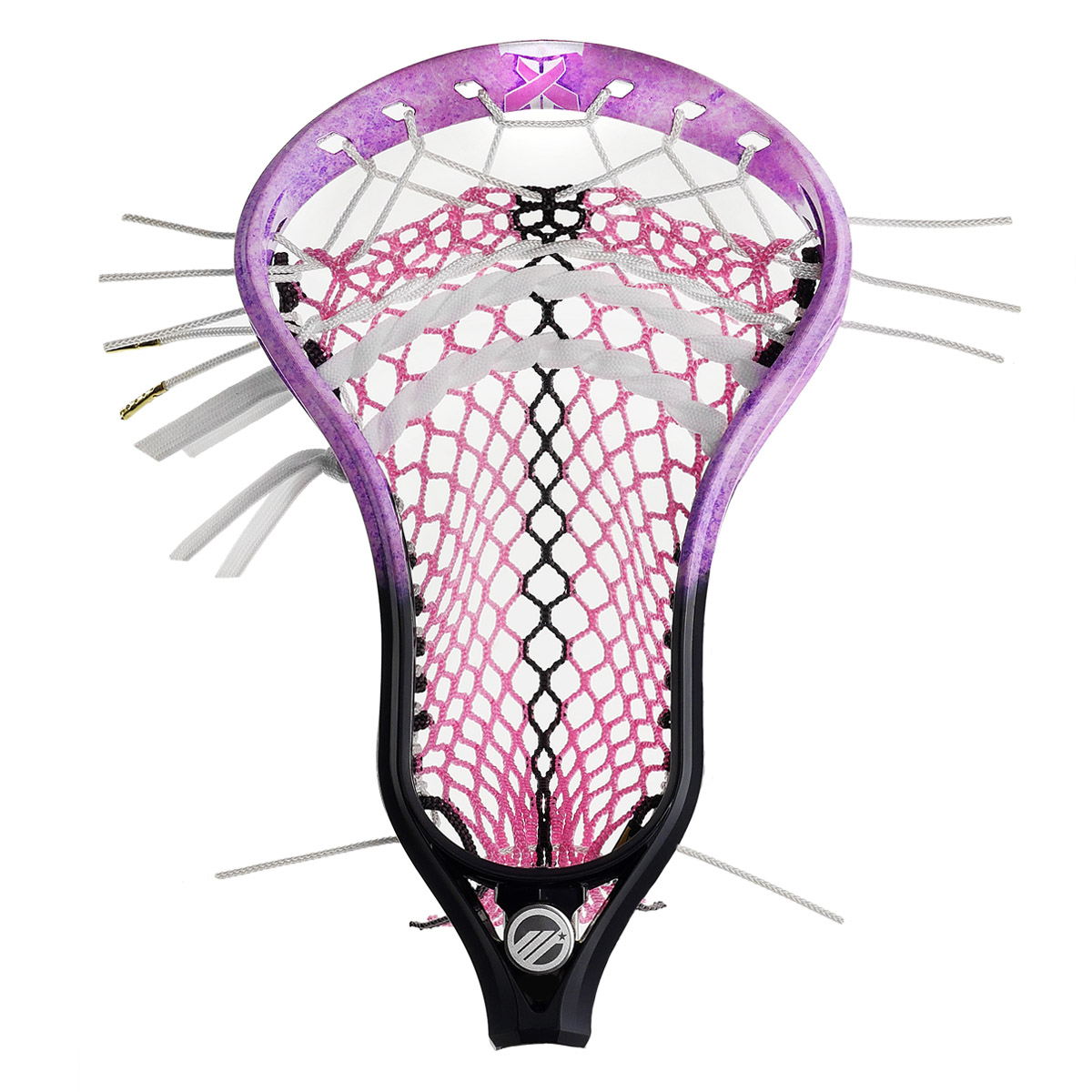
- Top-heavy knot patterns can increase hold and ball control
- Bottom-heavy patterns can enhance quick release and shot speed
- Alternating tight and loose sections can create a unique combination of hold and release
Maintaining Your Lacrosse Stick for Consistent Performance
A well-maintained lacrosse stick is crucial for consistent performance on the field. Regular care and adjustments can help preserve your carefully crafted string job and ensure your stick continues to perform at its best.
Regular Cleaning and Inspection
To keep your lacrosse stick in top condition:
- Clean your stick after each use, removing dirt and debris from the mesh and strings
- Inspect the strings regularly for signs of wear or fraying
- Check the knots and tensions to ensure they haven’t loosened during play
Addressing Weather Conditions
Different weather conditions can affect your stick’s performance:
- In wet conditions, use a water-resistant spray to prevent the mesh from absorbing moisture and becoming heavy
- In hot, dry conditions, lightly condition the mesh to prevent it from becoming brittle
- In cold weather, store your stick indoors to prevent the strings from becoming stiff and losing their tension
Making Adjustments
As you play, your pocket may stretch or shift slightly. Make small adjustments to maintain optimal performance:

- Tighten or loosen shooters to fine-tune ball release
- Adjust sidewall tensions to maintain the desired pocket depth and shape
- Replace individual strings if they show signs of significant wear
Remember, a well-maintained stick will not only perform better but also last longer, saving you time and money in the long run.
Customizing Your Stick for Different Positions and Playstyles
Different positions and playstyles in lacrosse demand different characteristics from your stick. Customizing your stringing can give you a significant advantage on the field by enhancing the aspects of play most crucial to your role.
Attackman’s Stick
Attackmen typically benefit from a stick that offers quick release and accurate shooting. To achieve this:
- Use a mid to mid-low pocket for a balance of control and quick release
- Implement tighter top strings for enhanced ball control during dodges
- Utilize multiple shooting strings for increased shot power and accuracy
Midfielder’s Stick
Midfielders need versatile sticks that can handle both offensive and defensive responsibilities:

- Opt for a mid-pocket that offers a balance of hold and release
- Use a moderate channel width for consistent passing and shooting
- Consider using bagged mesh for improved feel during quick transitions
Defenseman’s Stick
Defensive players require sticks that prioritize ball control and checking ability:
- Utilize a deeper pocket for enhanced ball retention during checks
- Implement tighter sidewall stringing for increased durability
- Consider using minimal or no shooting strings to maximize hold
Goalie’s Stick
Goalies need sticks that facilitate quick and accurate outlet passes:
- Use a shallow to mid-depth pocket for quicker ball release
- Implement a wider channel to accommodate the larger goalie head
- Consider using more flexible mesh for improved feel on saves
Remember, these are general guidelines. The key is to experiment with different setups and find what works best for your individual playing style within your position.
Innovative Stringing Materials: Beyond Traditional Mesh
While traditional mesh remains popular, innovative stringing materials have emerged, offering unique performance characteristics. Exploring these alternatives can help you find the perfect setup for your playing style.

Wax Mesh
Wax mesh is coated with a thin layer of wax, providing several benefits:
- Increased weather resistance, maintaining consistency in wet conditions
- Enhanced grip on the ball, improving control during cradling and passing
- Reduced break-in time compared to traditional mesh
Wax mesh is particularly popular among players who frequently play in varying weather conditions.
String Mesh
String mesh consists of interwoven strings rather than a solid piece of material. Benefits include:
- Excellent feel and responsiveness
- Customizable pocket characteristics through string tension adjustments
- Unique aesthetic appeal
String mesh requires more maintenance than traditional options but offers unparalleled customization potential.
Hybrid Meshes
Hybrid meshes combine different materials or weaving techniques to create unique performance characteristics:
- Mesh with integrated shooting strings for consistent release
- Combinations of stiff and flexible sections for a balance of hold and release
- Weather-resistant coatings applied to traditional mesh structures
These innovative materials continue to evolve, offering players more options to fine-tune their stick’s performance.

The Psychology of Stick Confidence: How Stringing Affects Mental Game
The relationship between a player and their lacrosse stick goes beyond mere physical performance. The psychological aspect of having a well-strung, personalized stick can significantly impact a player’s confidence and overall game.
The Power of Familiarity
A consistent string job creates a sense of familiarity that can boost a player’s confidence:
- Predictable ball release allows for more instinctive play
- Consistent pocket feel enhances muscle memory in stick skills
- Reliable performance reduces mental distractions during gameplay
Personalization and Ownership
Customizing your stick’s stringing creates a sense of ownership that can enhance your connection to the game:
- Choosing specific string colors or patterns can reflect your personality
- Fine-tuning the pocket to your exact preferences creates a unique tool
- The process of maintaining and adjusting your stick builds a deeper understanding of your equipment
Adapting to Change
While consistency is important, being able to adapt your stick to new situations can also boost confidence:

- Experimenting with different stringing styles broadens your skill set
- Successfully adjusting your stick for varying weather conditions demonstrates adaptability
- Overcoming challenges with your stick setup can build resilience and problem-solving skills
Remember, the most important factor is finding a setup that makes you feel confident and comfortable on the field. This psychological edge can often be the difference between good and great performance.
Choosing the Right Lacrosse Mesh Improves Passing Accuracy
When selecting lacrosse mesh for your stick’s pocket, you’ll want to consider the mesh’s stiffness and hole size to achieve ideal ball control for accurate passing. Stiffer meshes with smaller holes tend to provide better ball retention, allowing you to cradle and handle the ball with precision. This gives you superior command over the ball as you wind up for a pass, letting you dial in those quick feeds to cutters or perfectly placed outlet passes to spark fast breaks. On the other hand, more flexible mesh with larger holes generates better ball release for quicker shots or passes, at the expense of some ball control. Finding the right balance will come down to your playing style and position. For example, elite offensive midfielders may prefer a more flexible mesh for lightning-quick give-and-go passing, while lockdown defenders need a bit more stiffness in the mesh to maintain possession when checking opponents. No matter what type of mesh you choose, proper stringing is key to optimize the pocket for catching, throwing, and handling. Focus on stringing a balanced pocket that evenly tensions the mesh across the head. This provides just the right amount of give to cradle securely while still allowing the ball to settle into the optimal release point. Avoid extreme pocket styles like deep fishnets that swallow up the ball or wide-open pancake pockets that cause the ball to rattle around. With the ideal mesh and balanced stringing, you can hone passing accuracy through the smallest windows and over long distances. Dialing in your pocket will lead to effortless ball control and more completed connections between teammates.
Proper Lacrosse Stringing Creates Optimal Ball Release

When stringing your lacrosse stick, the top strings are crucial for creating the optimal ball release for powerful and accurate shots. The top strings run horizontally across the top of the head, creating the channel that holds the ball in the pocket. Tightening these strings provides more hold on the ball, while loosening them allows the ball to come out more freely. For most players, the ideal setup is moderately tight top strings that give you control during cradling but still allow the ball to come out smoothly. Extremely tight top strings can restrict ball release too much, causing the ball to get stuck in the pocket, leading to slower passing and shooting. Meanwhile, very loose top strings give you less command over ball retention, as the ball sits too high in the pocket. This can lead to unpredictable release points and inaccurate throws. The key is finding the sweet spot where the ball naturally settles into the lower-mid section of the pocket, right where you want it to come out for a throw or shot. The angle of the top strings also affects release, as a more pinched channel gives the ball less space to come out cleanly. For optimal ball flight, aim for a slightly wider top string angle without compromising ball control. You can experiment with different top string placements and tensions during stringing to see what works best for your playing style. Tighten up a bit if you want more possession for running through checks, or go a bit looser if you’re looking for lightning-quick release. Dialing in the right tension and placement on the top strings will give you the ultimate combo of ball control, smooth release, and pinpoint accuracy when hucking passes up-field or ripping rope on your cannon crank shot. With a properly strung pocket, you’ll have the confidence to fire at will, hit your teammates in stride, and pick corners with precision.
Lacrosse Shooting Strings Boost Shot Velocity

One of the most important stringing elements for generating maximum shot speed in lacrosse is the shooting strings. Shooting strings run horizontally across the throat of the head, below the scoop. These nylon strings act as slingshots that add extra whip to your shot as you bring the stick through the throwing motion. Tighter shooting strings create more tension that really loads up behind the ball as you wind up. This stores more potential energy that gets transferred into the ball when you release, boosting shot velocity. You’ll get the most bang for your buck by using thicker shooting strings rather than traditional shoelaces. The added thickness gives you more surface area for energy transfer. You can also experiment with various shooting string patterns to fine tune your shot power. A triple or quadruple string setup evenly distributes tension across the pocket for consistent missile shots. Some players use a straight pattern for straightforward loading, while interwoven and chevron patterns generate added torque and rotation for extra juice. Avoid cranking down too tightly on the shooting strings, as this can restrict smooth release and cause inaccurate shots. The goal is taut tension without compromising ball control. Combine optimized shooting strings with a flexible mesh and you have a lethal formula for blistering fast shots. The supple mesh works in tandem with the shooting strings by further amplifying energy transmission. When you have both dialed in, you’ll absolutely abuse goalies with smoking hot rockets from up top or in close. Whether you’re looking for a little extra mustard on your sidearm or want to take your overhand crank to the next level, technical shooting string placement is crucial for giving you that coveted extra zip.
Proper Stringing Increases Lacrosse Stick Accuracy
One of the keys to improving the accuracy of your lacrosse stick is ensuring proper stringing across the entire pocket. Whether you’re looking to enhance your passing precision or shooting placement, optimized stringing will give you superior overall stick performance. Start from the bottom up by stringing tight sidewall strings. This prevents the mesh from ballooning out too much and keeps the pocket taut. You’ll get a more defined sweet spot for clean ball release. Moving up, focus on interlacing the runners through the sidewall strings in a balanced, symmetrical way. This evens out tension across the entire mesh bed to avoid lopsided pockets that can cause the ball to fly errantly. Up top, moderate tension on the shooting and throat strings will still add whip without being too restrictive. This gives you control for placing shots in corners. Finally, the mid-range top strings should be strung to create a ball channel with even tension. The ball will consistently settle in the same central release point instead of floating around the pocket. In addition to precision stringing, choosing the optimal mesh and head is key. Stiffer mesh holds the ball firmly in place, while a head with a narrower throat focuses the release point. Bring it all together with proper stringing and you’ll notice a dramatic improvement in passing and shooting accuracy. Effortlessly hit cutting teammates in the hands or pick corners on slick bounce shots. Consistent accuracy also translates into confident stick handling and protection against checks. When every part of the pocket is strung just right, you can trust your stick 100% and make every pass, catch, cradle, and shot on target. Dial in the details with flawless stringing and transform your stick into a precision sniper rifle.
Mesh Stiffness Affects Lacrosse Ball Retention
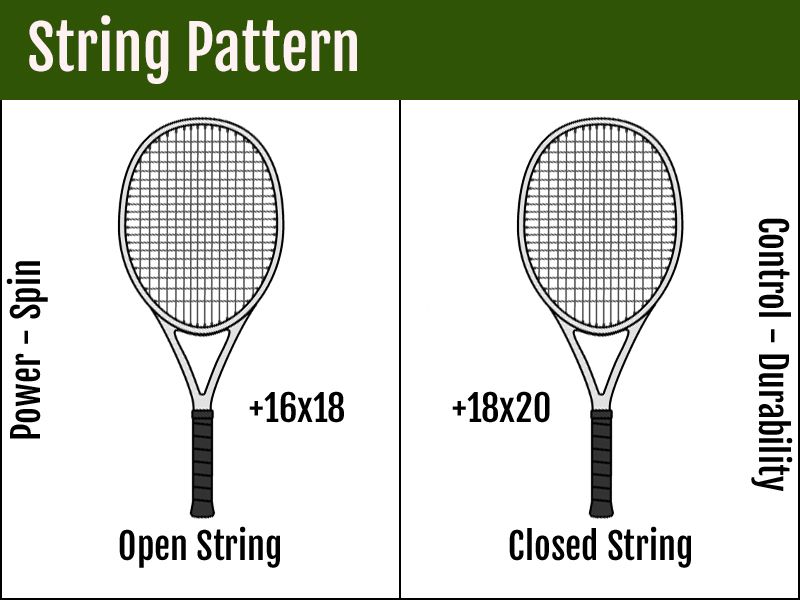
When stringing up a lacrosse pocket, the stiffness of the mesh you choose will directly impact the stick’s ability to retain possession of the ball during cradling, running, and exchanges. Stiffer mesh constructed with thicker, more tightly woven nylon provides superior ball control thanks to its structural rigidity. The taut mesh gives you a more defined pocket for securing the ball, preventing it from easily bouncing out. The increased tension across the bed makes it easier to “feel” the ball in your stick, letting you cradle with confidence and swiftly switch hands on the run. Elite offensive players favor stiff mesh for hanging onto the ball while driving to the cage amid checks and contact. Its heightened ball retention ability also boosts catching reliability, ensuring you can snag feeds on the run or in traffic without drops. More flexible mesh offers less overall structure, though provides a quicker release when looking to make fast feeds or dodge defenders. Many middies sacrifice some ball control for the added maneuverability. On defense, most long poles still opt for stiff mesh to maintain possession while covering opponents. During stringing, focus on interlacing tight sidewall strings on stiff mesh for optimal geometry. This prevents warping or loose pockets while augmenting rigidity. Dialing in the right mesh gives you ultimate control over how the pocket behaves. Find the sweet spot of retention versus release that matches your playing style. With the ball locked in and excellent feel, you’ll have the ball handling skills to create space, run through pressure, and facilitate the offense.
Lacrosse Sidewall Strings Impact Pocket Depth
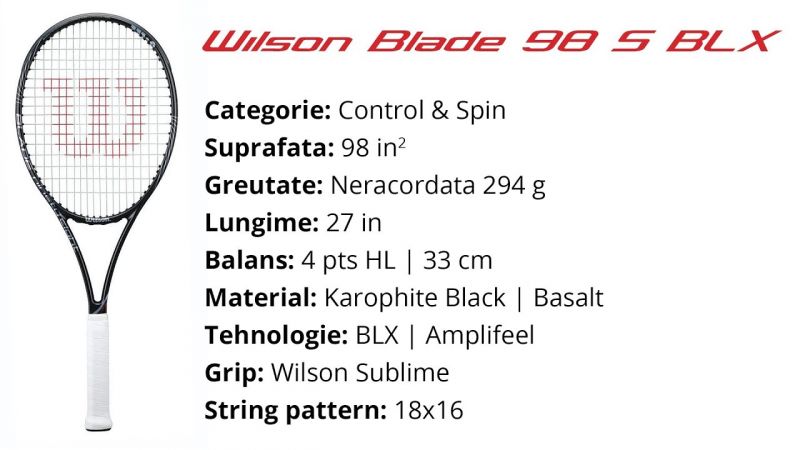
The sidewall strings on a lacrosse stick play a key role in determining pocket depth and ball control. Sidewall strings refer to the vertical nylon cords interlaced along the sides of the head that anchor the mesh in place. Tightly stringing the sidewalls pulls the mesh up from the scoop, decreasing overall pocket depth. This shallower pocket provides more defined structure for improved ball retention. You’ll get a more consistent release point for accurate passing and shooting, along with better feel during cradling. Elite midfielders often favor shallow pockets for quick sticks and feeds. More loose sidewall stringing drops the mesh lower in the head, creating extra deep pockets. This deeper pocket swallows up the ball more, allowing for exaggerated fakes and cradling. Attackmen typically like the added maneuverability despite less ball control. However, pockets strung too deep can lead to unpredictable ball flight and handling. The key is finding the optimal pocket depth for your position and style. Middies may want a pocket on the shallower end for precision, while Attackmen can go deeper for flashier moves. During stringing, weave the sidewall strings in an interlocked pattern to enhance pocket geometry. Pulling the sidewalls tight begins to curve the mesh up and out of the lower head. Leaving them more loose lets the mesh relax down into the scoop. Dialing in the right sidewall tension gives you ultimate command over your pocket’s depth and performance.
Mesh Hole Size Impacts Lacrosse Throwing and Catching
The size of the holes in your lacrosse mesh directly affects ball control for both throwing and catching. Mesh with smaller holes provides more points of consistent contact with the ball, leading to superior command over the ball in the pocket. This tighter mesh allows for precise winding up and release when passing and shooting, giving you pinpoint accuracy. Smaller holes also make it easier to receive imperfect passes or shots thanks to the increased retention from more mesh contact. You’ll have the confidence to reach for off-target throws and haul in feeds in traffic. However, mesh with larger, more open holes offers a quicker release at the expense of control. While you may sacrifice some accuracy and catching reliability, the larger holes generate lightning-quick passes and shots perfect for fast break opportunities. Finding the right balance depends on your position and style. For example, midfielders may opt for medium-sized holes to get the best of both worlds, while attackmen can go larger for rapid-fire dodges and feeds. No matter the hole pattern, focus on consistent geometry through proper stringing. This ensures the mesh uniformly tensions across the head instead of bagging out in places. Dialing in the right mesh gives you ultimate command over how the ball enters and exits the pocket. With holes optimized for control, you’ll throw ropes, snag anything remotely catchable, and handle the ball with ease.
Proper Lacrosse Top Stringing Enables Smooth Ball Release
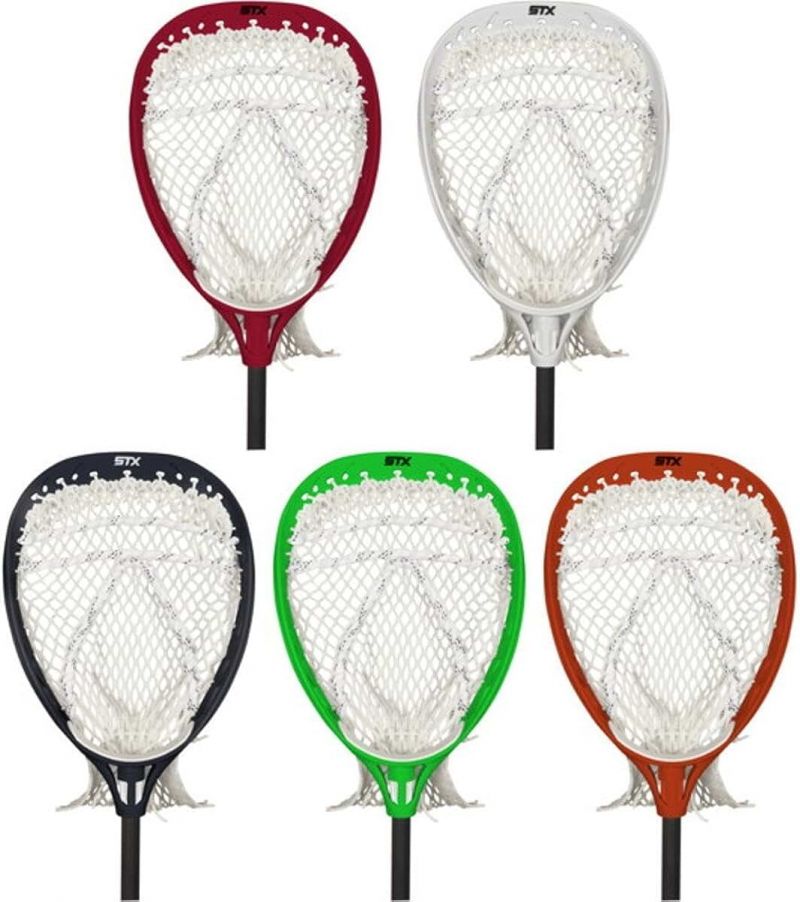
Optimizing the top strings on your lacrosse stick is crucial for getting smooth, consistent ball release on passes, shots, and clears. The top strings run horizontally along the top of the head, creating a channel that holds the ball in place. Properly stringing the tops keeps the ball securely cradled in the pocket while allowing it to freely fall into the optimal release point. Interlacing the top strings in a wide checkerboard or diamond pattern evens out tension distribution to avoid lopsided pockets that inhibit clean release. Moderately tight top strings strike the perfect balance of control and finesse. Overly loose tops lose ball retention, causing inaccurate throws as the ball rattles around before release. Meanwhile, extreme top string tightness restricts flow out of the pocket, leading to the ball getting stuck during passing or shooting motion. Focus on a symmetrical pattern with 2-4 evenly spaced top strings to center the ball channel. Positioning the top strings a pinch wider at the throat also opens up the channel for unimpeded ball movement. Dialing in clean top stringing transforms sloppy throws into buttery smooth whips, allowing you to slickly hit cutters in stride or blast shots top corner. With the confidence of optimized ball release, you can focus purely on throwing fundamentals and placement without fighting your pocket. Bring fluidity to your game through masterfully strung top strings that set you up for throwing success.
Proper Lacrosse Stringing Reduces Errant Throws
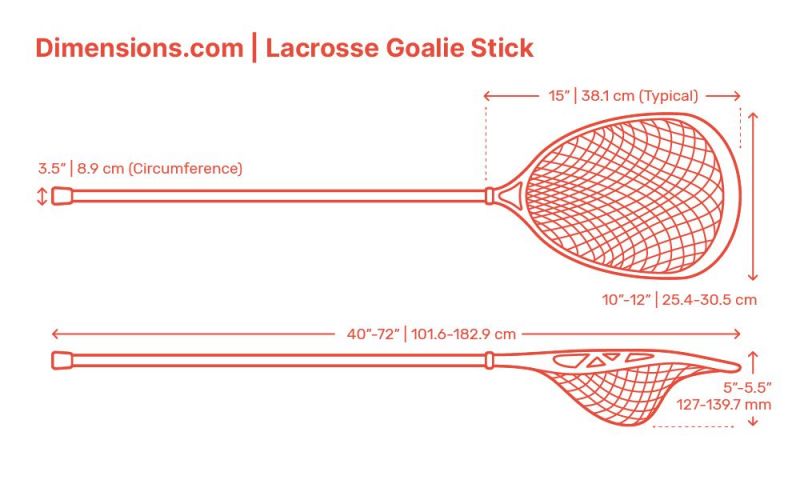
Optimizing the stringing of your lacrosse stick is the most effective way to reduce errant, inaccurate throws. The key factors are even string tension, balanced pocket depth, and proper runner placement. Ensure tight sidewall strings are interlaced symmetrically so the mesh tensions uniformly across the head instead of bagging out in places. This prevents the ball from releasing unpredictably. Moderate top string tightness also keeps the ball securely controlled in a centered channel, enabling smooth release. For pocket depth, mid-range placement of the runners creates an ideal mid-to-low ball position for controlled throws. Extreme sidewall tightness or looseness throws off this pocket geometry. In terms of runners, consistent x-shaped interlacing avoids channeling the ball to certain spots on off-center throws. Proper stringing also enhances catching ability, allowing you to corral imperfect passes that may have gone astray. Together, optimized stringing mitigates poor fundamentals by improving the pocket’s throwing efficiency and forgiveness. However, precision throwing requires mastery of mechanics as well. Focus on overhand wind-up, follow through snap, and hip rotation to impart spin and velocity. Smooth footwork during passing motion also enhances accuracy. Combine solid fundamentals with ideal stringing, and you’ll hit leading cutters in stride from any angle. Defenders will think twice about overplaying passing lanes with your arsenal of rockets. Dialing in pocket performance removes excuses for errant throws, letting your mechanics shine for consistent passing precision.
Balanced Pocket Structure Enables All-Field Lacrosse Play
When stringing your lacrosse stick, optimizing pocket structure for balanced performance is crucial for succeeding in all facets of the game. The key is crafting a pocket with mid-range depth, even string tension, and ample ball control. This gives you the versatility to operate anywhere on the field without compromising passing, shooting, or handling ability based on pocket geometry. Mid-depth placement of the runners creates an ideal midpoint ball position for smooth release across the field. Shallow pockets hinder behind-the-back throws, while deep pockets prevent quick-stick passes. Balanced tension from proper sidewall and top string interlacing provides structure without overly restricting ball movement. This facilitates catching bad passes or throws off awkward platforms. Moderate mesh stiffness also boosts possession on checks while offering responsive handle and release. With a surgical pocket optimized for control, you can thread any pass imaginable and maintain possession in crowds or contact. Your pocket will function excellently as an offensive initiator, defensive enforcer, or transition catalyst. No longer will you need to adjust your game based on pocket performance in certain scenarios. True lacrosse mastery comes from honing fundamentals across all aspects of the game. Allow your properly strung pocket to support full-field play by providing a sturdy foundation for pinpoint passing, authoritative shooting, and confident ball-handling required at any position.
Mesh and Strings Enable Strong Lacrosse Checking
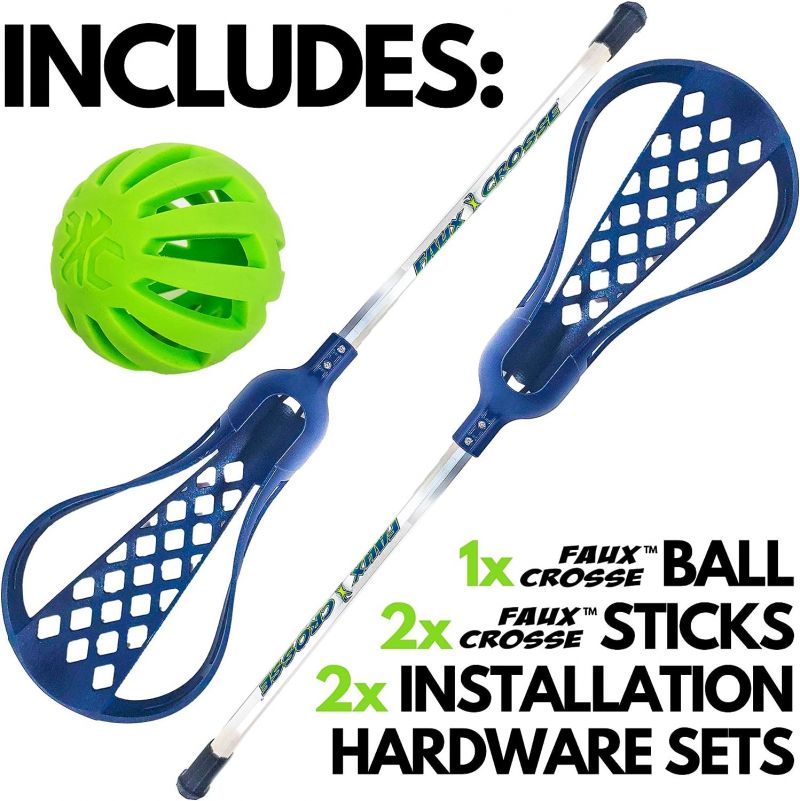
In lacrosse, optimizing your pocket with the right mesh and stringing is crucial for executing decisive checks while maintaining possession. The key factors are stiff mesh, tighter mid-range sidewalls, reinforced sidewall anchoring, and multi-point contact between ball and pocket. Stiffer mesh better retains its structure under contact for superior ball control. Tighter sidewalls increase tension to keep the ball cradled in checking collisions. Extra sidewall anchor knots prevent the mesh from warping or dislodging. More mesh surface contact via regulated hole size provides multiple touchpoints to withstand checks. During stringing, focus on pulling sidewalls taut from mid-head up and interlacing in a locked diamond pattern. This creates tension while limiting drastic pocket movement. Use heavy nylon string to firmly fix the mesh channels along the sidewalls as well. With the ideal configuration, you can deliver gap checks, lift checks, and body checks with force while barely noticing the contact through your rock-solid pocket. Your stick will become an extension of your body as you stand up dodgers, mash cutters, and control the middle of the field. Even one-handed checks while fully bodying up will pose no threat to your vice grip on the ball. The added check resistance also enables you to maintain offensive rhythm when drawing contact. Master tight yet flexible stringing, and utilize your pocket to overpower opponents in any capacity.
Optimized Pocket Tension Improves Lacrosse Cradling
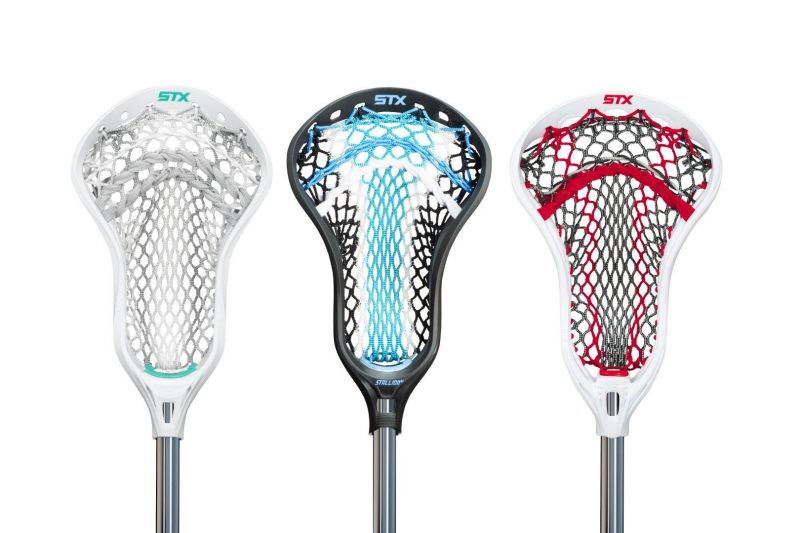
Proper stringing that optimizes pocket tension is crucial for executing smooth, controlled cradling in lacrosse. The key factors are balanced sidewall and top string tightness paired with mid-range runner placement. Even tension distribution avoids lopsided pockets that inhibit fluid cradling. Moderate sidewall tightness keeps the mesh taut without warping the pocket geometry. Centered top strings hold the ball securely without restricting movement. Runners placed mid-pocket create an ideal ball rest point below the sweet spot. This lets you cradle the ball fluidly while maintaining maximum control and feel. With the ball comfortably centered and pocket tension providing structure without rigidity, you can cradle smoothly between hands and around your body. Your rolls, splits, and switches will remain seamless even at full speed with a defender on your hands. Mid-height placement with ample tension also lets you cradle low or high as needed to protect the ball. When dodging or working through traffic, the ball will become an extension of your stick, leaving it glued to your pocket through any situation. Really dialing in pocket optimization enables you to cradle mindlessly without looking or feeling for the ball’s positioning. This frees you up to scan the field, anticipate passing lanes, and react to openings. Bring rhythm and fluidity to your game through masterfully optimized pocket tension and ball positioning.
Shooting Strings Boost Lacrosse Shot Power
Installing optimized shooting strings is one of the best ways to generate maximum shot power on lacrosse shots. Shooting strings refer to the nylon cords interlaced horizontally along the throat of the head. They act as lever arms that add extra whip to your shot during the throwing motion. The key factors for energy transfer are shooting string thickness, pattern, and tension. Thicker shooting strings provide more surface area for contact with the ball, increasing potential force transfer. Ample shooting string strands spread tension evenly across the pocket for consistent velocity. Chevron and diamond patterns also channel added torque for extra whip. However, over-tightening the shooting strings can restrict ball movement and release. Settle on taut even tension that loads the pocket without limiting smooth mechanics. Pair shooting strings with a flexible mesh for amplified energy transmission. The mesh will compress and expand to work in tandem with the shooting strings during wind-up. Dialing in shooting string placement transforms average crank shots into blistering fast rips. The instant power boost provides the ability to beat goalies top side from way out or bounce it by them on the doorstep before they can react. Bring heavy artillery to your offensive skill set with shooting strings engineered for pure torque and maximum velocity.
Lacrosse Mesh Affects Ball Pick-up Reliability
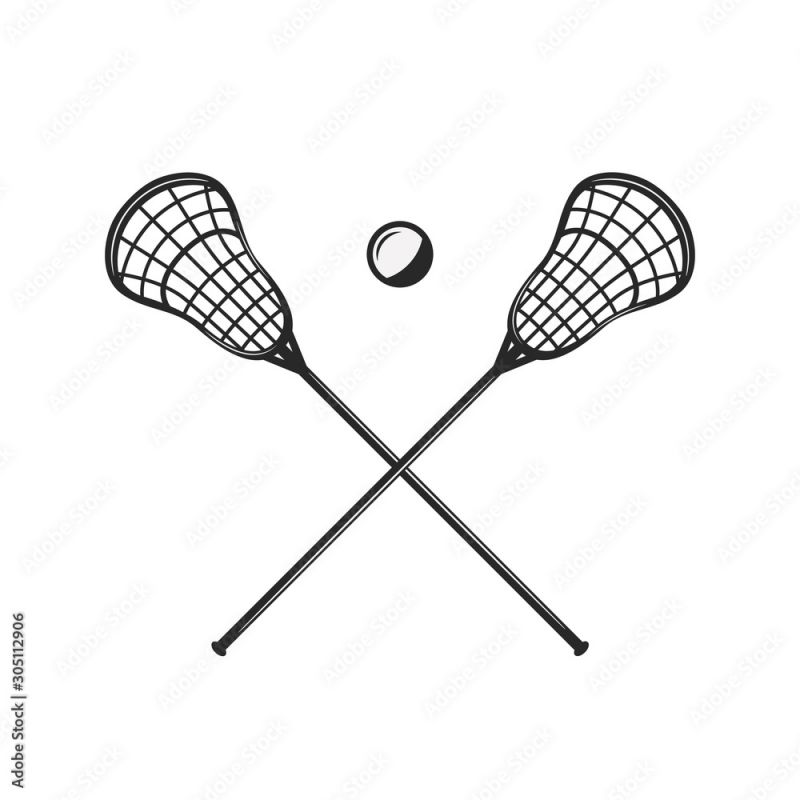
The mesh you string your lacrosse stick with directly impacts ability to scoop ground balls consistently. Stiffer mesh with smaller, more uniform hole patterns provides the most control over ball pick-ups. The added rigidity retains pocket shape to corral ground balls, while more mesh contact points securely trap the ball. You’ll be able to cleanly clamp down on 50/50 balls off the draw, snatch up grounders amid a scrum, or snare low skip passes in traffic. Superior ball retention ability also ensures you don’t end up flinging scooped balls wildly away, maintaining composure through the play. More flexible mesh can make for trickier scooping, as the lack of structure causes the pocket to close unpredictably around the ball. This leads to poor ball control and bobbling. However, once a ground ball is corralled in any pocket, the focus shifts to securing it with your entire stick through the gauntlet. Protect the ball with your body while pulling it tight to the plastic by gripping both sidewalls. Check sticks prying for the ball and tuck your stick head away from slashers. Then survey the field and clear confidently. While mesh affects the initial scoop, ground ball mastery requires snap decisions and technical skills beyond pocket performance. Focus on positioning, reaction time, footwork, and vision to gain an edge on ground balls before they even hit the turf.
Proper Pockets Build Lacrosse Confidence and Skills
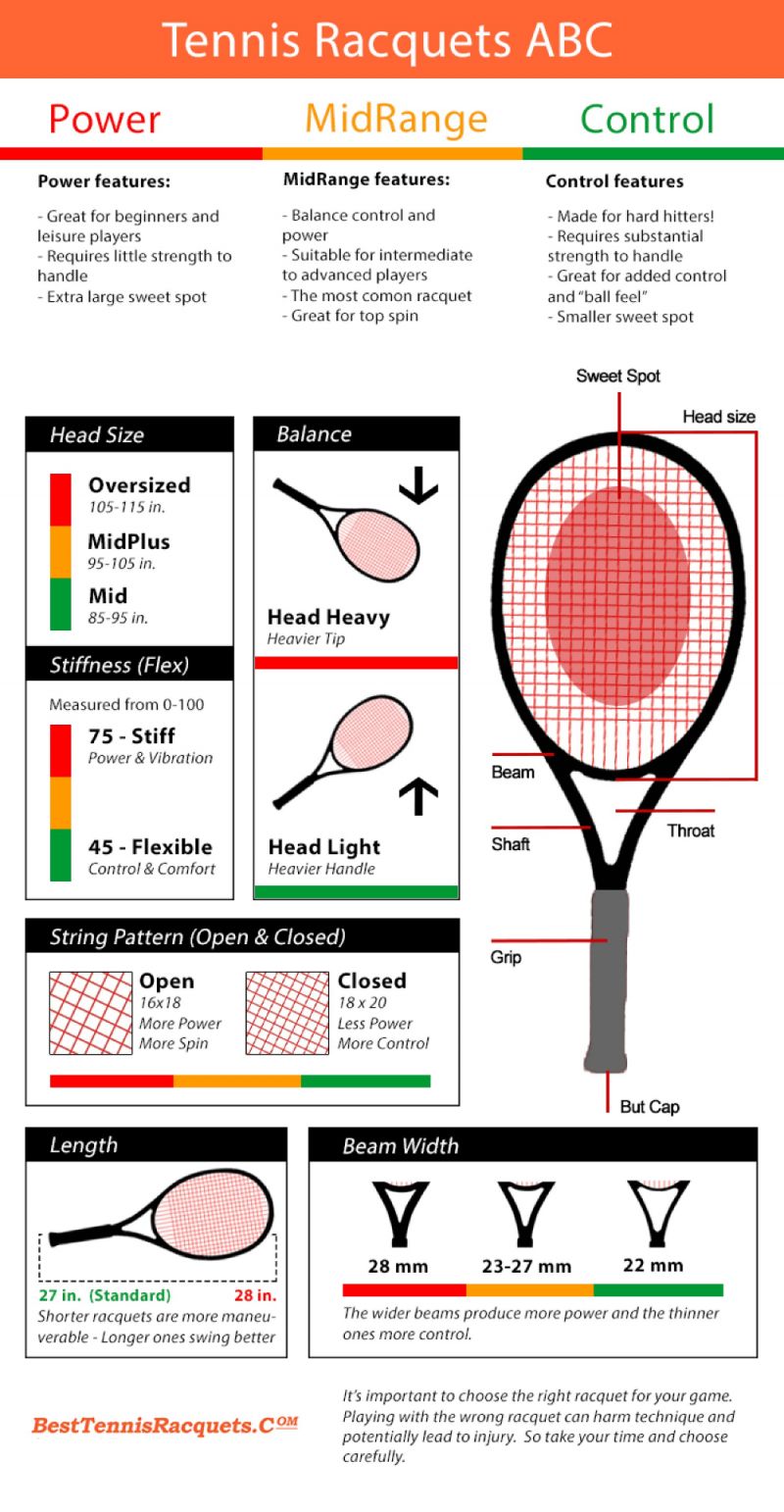
Mastering lacrosse stick stringing to craft an optimized pocket is a crucial foundation for building confidence, improving skills, and reaching your full potential in the game. With balanced stringing and mesh optimized for your playing style, your pocket will perform excellently across all facets. You can develop skills and push limits with the confidence your stick will respond. For example, tight sidewalls and a mid-depth runner setup enable cradling and ball control in crowds to expand your dodging game. A semi-stiff mesh gives you the composure to absorb checks and retain possession while surveying the field. Perfectly tuned shooting strings add next-level velocity to place shots on a dime. Everything from ground balls to catching bad passes becomes second nature with an extension of your arm doing its job flawlessly. Rather than fighting your stick, you can purely focus on high-level field vision, technique mastery, and out-executing opponents. Your pocket will disappear below conscious thought, enabling full immersion in the game’s intricacies. True mastery transcends pocket performance, but optimized stringing provides the foundation needed to push your skills and instincts to the next level. Take command over how your stick handles to build fundamentals and open up the full potential of your mental and physical game.